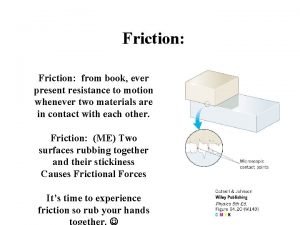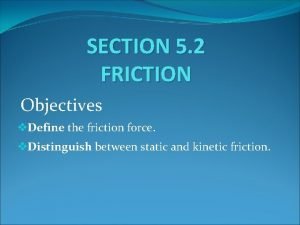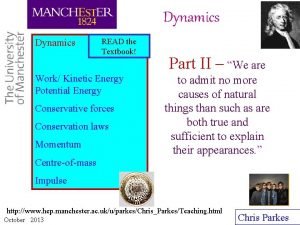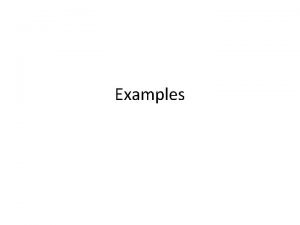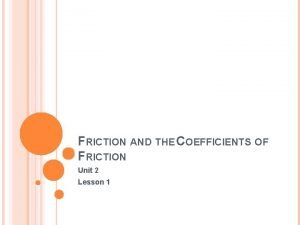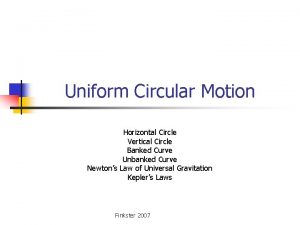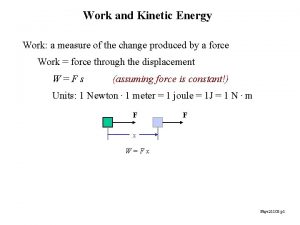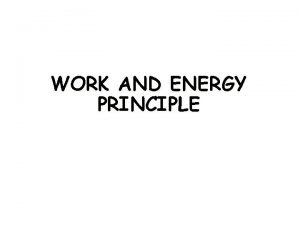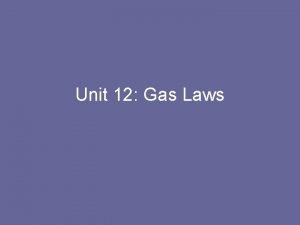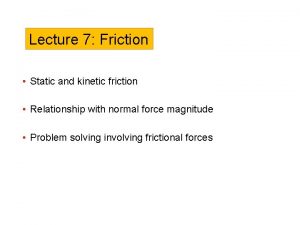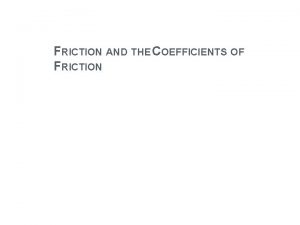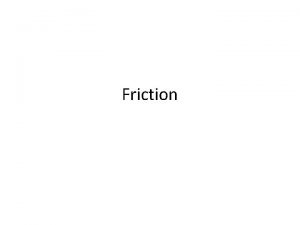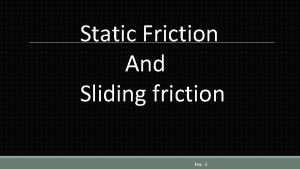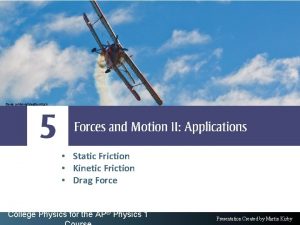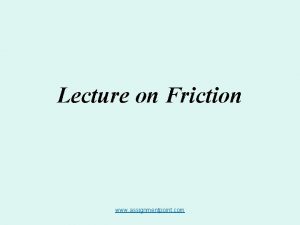Lecture 7 Friction Static and kinetic friction Relationship














- Slides: 14

Lecture 7: Friction • Static and kinetic friction • Relationship with normal force magnitude • Problem solving involving frictional forces

Frictional forces Frictional force • opposes motion or impending motion relative to a surface. • caused when two surfaces rub against each other. • acts parallel to surface Two types of frictional forces: Static — prevents motion from starting Kinetic — opposes motion in progress

Static Friction

Maximum static friction

Getting object to move

Kinetic friction

Static and kinetic friction

Discussion question A block of mass m is at rest on an incline that makes an angle θ with the horizontal. The coefficient of static friction between block and incline is µS. What is the magnitude of the frictional force, in terms of system parameters? A) µS N B) µS mg C) µS mg cos θ D) mg sin θ

Example: block on incline If the incline is too steep, the block will not be able to remain at rest because the necessary static friction would exceed the possible maximum. What is maximum angle θmax for which block won’t slide? Does it depend on mass of the block? Demo: θmax for truck on inclined plane


Example with kinetic friction A block of mass M is moving to the left with initial speed V on a rough horizontal surface. The coefficient of kinetic friction between the block and the surface is μ. The block is moving against a constant wind that is blowing down on it at an angle θ with respect to the vertical and produces an effective blowing force of magnitude B. Derive an expression for the block’s acceleration.


Example with friction and two objects A block of mass M is moving to the right on a rough horizontal surface because a pulling force of magnitude P is applied to the block at an angle of θ with respect to the horizontal. The block remains in contact with the surface at all times, and the coefficient of kinetic friction between block and surface is μ. The block is connected to the end of a massless string that runs over a massless frictionless pulley. A block of mass ½M is suspended from the other end of the string. Derive an expression for the tension in the string. If we don’t have enough time in lecture to finish working through the problem, please see video on the course website.

 Kinetic and static friction
Kinetic and static friction Frictional force formula
Frictional force formula Coefficient of friction formula
Coefficient of friction formula Drawing that shows friction
Drawing that shows friction 01:640:244 lecture notes - lecture 15: plat, idah, farad
01:640:244 lecture notes - lecture 15: plat, idah, farad Kinetic friction definition
Kinetic friction definition Lack of friction
Lack of friction Work and potential energy
Work and potential energy Direction of static friction
Direction of static friction Unit of frictional force
Unit of frictional force F vertical
F vertical Customer relationship mangement
Customer relationship mangement Kinetic energy from acceleration
Kinetic energy from acceleration Principle of work and kinetic energy
Principle of work and kinetic energy Relation between pressure and kinetic energy of gas
Relation between pressure and kinetic energy of gas

